The Kenogami Net Zero Energy off-grid house is a virtual energy laboratory, and in constant evolution. Every system of this award-winning home is innovative from the heating and ventilation systems to the production of domestic hot water. Energy systems as advanced as this have never been seen together before, and collectively make this house in a harsh climate possibly the most efficient house ever made, even exceeding Passive House levels of performance.
The heat source: a unique combination of passive solar heat gain, photovoltaic solar panels, a condensing boiler, heat pump and thermal battery.
The ultimate goal during the design of this Net Zero Energy home was to eliminate the need for a supplementary heating system. The primary heat source is solar, stored in the heavy mass of concrete and brick, to be later released as the home cools.
However, in the Saguenay region of Quebec where this house is located, the climate is almost subarctic. Any passive solar home in such an environment would need to be equipped with some source of supplementary heat. The Kenogami House was designed with in-floor radiant heat, orginally supplied by a condensing boiler.
The super high-efficiency building envelope of the Net Zero designed Kenogami House is so well-insulated that should the heating system ever completely fail, the house would never fall below freezing. If weather conspired to provide the most brutal cold spell combined with an extended lack of sunlight, it would drop no lower than 10°C. With even minimal sunlight and no supplementary heat, this house will easily remain at or above 18°C.
A heating system already being updated:
Advised by Stéphane Bilodeau, president of Enerstat group, Alain Hamel made changes so that the home runs entirely on renewable energy for all his needs bringing the home down to Net Zero Energy standards.
That is to say, the photovoltaic(PV) panels that already power his highly efficient sustainable home and part of his water heating will serve an additional purpose in the future. They will soon power a heat pump that will phase change heat to a thermal storage battery.
The objective of this is to multiply the energy produced by the PV equipment and make the most of the energy produced to drive this off-grid design into the realms of net zero energy homes.
There are two heat pumps in this house, an air-to-air heat pump that extracts heat from outside air to heat inside air, and an air-to-water heat pump. The air to water heat pump extracts heat from ambient air inside the home and transfers it to the hot water tank, offering efficient air conditioning in summer.
As for heat storage, a thermal battery such as this can store 10 times more energy compared to an equal volume of water. It is anticipated that this system will supply all of the domestic hot water, and the entire energy needed for heating this close to net zero energy house, in the form of in-floor radiant heat.
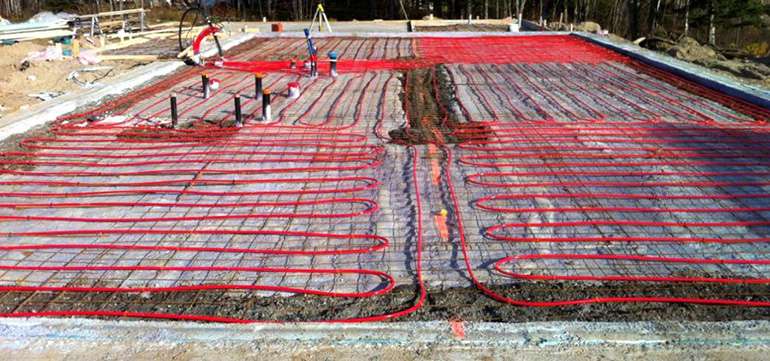
Radiant floor heat in a Net Zero Energy Home:
While the radiant floors were originally heated with a condensing boiler, that was since replaced by a solar thermal battery. A condensing boiler is so named because the system recovers energy from the condensation of water vapour contained in the fumes of combustion. For condensation to occur, it is essential for water to be at lower temperatures.
Condensing boilers have an efficiency rate of 95% which means that for every 100 kWh of energy supplied by the gas, 95 kWh of energy will be transformed into useful heat - which is good for a boiler, but still not as good as a heat-pump. This boiler is connected to a 'low temperature' radiant floor which operates with a water temperature of between 40 and 45°C.
The coupling of a condensing boiler with a radiant floor is in this case a particularly good match, as a condensing boiler is more effective when producing water at lower temperatures than standard radiators (65–70°C), precisely what is needed in this situation. It's difficult though to push the design of a home to Zero Net Energy if burning some kind of gas - so this high-performance home is upgraded to a solar PV powered air to water heatpump to put heat into the radiant floor heating in the slab foundation.
Heating water with PV instead of thermal solar panels:
It may seem counterintuitive at first, but there is strong case supporting the use of PV panels for heating water over thermal solar systems in Net Zero Energy homes, though recent innovations such as Viessman's Vitosol solar thermal water heater has revived that debate.

When initially installed, Alain Hamel's off-grid standard photovoltaic system was designed to supply only the electrical appliances in the home. As advised later by Patrick Déry, member of GREB (Group Ecological Research of the Bay), Alain connected his electric water heater to his PV solar panels knowing that these panels would be generating more energy than he needed.
The electrical system will be connected to the electrical grid, so any surplus power generated will be fed back into the grid system. Conversely, the home will draw from the grid when insufficient power is being supplied by the photovoltaic panels, with the hope that the Net result will mean the home is Zero Energy.
Alain Hamel will opt for the net-metering option with Hydro-Québec; that is to say that each kWh his home feeds into the electrical grid will be deducted from his next electricity bill.
While exact levels of supply and demand are impossible to determine, this system has been designed to meet the anticipated consumption levels of the home, so Alain expects to see his bill reduced pretty much to $0. That is in essence, the very concept of Net Zero Energy Homes, when it all balances in the end.
How water is heated with PV panels in a Zero Energy Home:
In a super efficient Net Zero Energy home, and as can be seen in the diagram below, photovoltaic panels supply several types of equipment, some DC some AC.
Solar panels will first charge the 48V batteries that will then feed different receivers. The batteries then power the two heating elements contained in the hot water tank, which operate on DC 48V, the same voltage as the battery. Therefore, there is no need to go through an inverter or a chopper (which alters the type of current) during this step. Then, the current from the batteries charges a 12V battery that supplies the home with power.
The 48V batteries also supply power to outlets and home appliances that operate in AC (after passage of current through an inverter that will convert the direct current from the batteries into alternating current (120V) commonly found in homes).
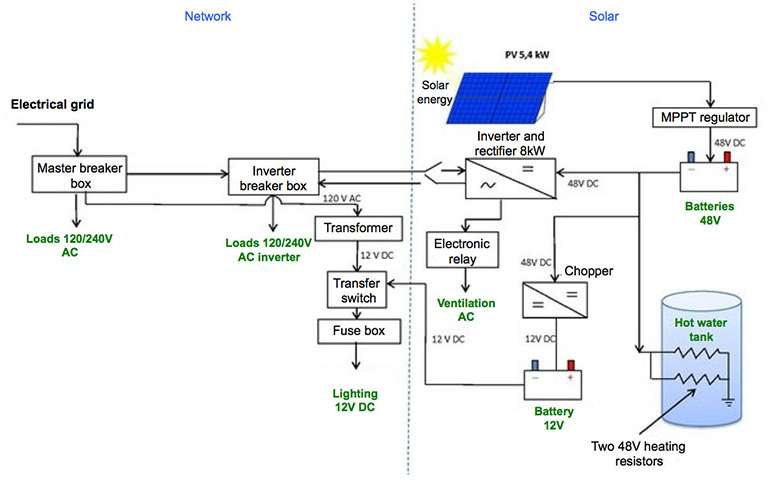
And it works! After construction of this Zero Energy Home
Alain Hamel reported the following: "We have only had three to four hours of sun daily for the last four days, and the temperature of the water heater never dropped below 60°C, despite using hot water to wash dishes and clothes. This system currently provides 100% of our domestic hot water needs, and this is without skimping on usage."
Regarding winter, Alain anticipates that "the lower angle of the winter sun will increase the efficiency of the solar panels on cold, sunny days, and when the heat pump is installed this assembly should provide almost all of our needs for heat, hot water, lighting and appliances" pushing the performance to Net Zero Energy standards.
The heat pump has a coefficient of performance (COP) of about 3,1 on average, according to Enerstat. This means that on average, for 1 kW of electrical power, the heat pump will provide 3,1 kW of thermal power for domestic hot water and heating - which certainly helps the amountof energy needed .
The benefits of PV over solar thermal for Zero Energy Homes:
Since the design of this incredibly resiliant Zero Energy house already included PV solar panels, it made more sense to expand the existing system to include domestic hot water heating rather than invest in a separate system of solar thermal panels. On top of that initial cost saving there were additional benefits in the search for a net zero energy comnsumption:
- Solar thermal systems contain moving parts (pumps and solenoid valves) that wear out over time and require repair or replacement.
- In cold climates solar thermal systems are prone to damage through freezing.
- During summer months, excess heat generated from solar thermal systems can cause damage, and also amounts to a lost opportunity to collect heat, whereas excess power generated by PV panels can be fed back into the power grid.
- Thermal solar systems do not lend themselves well to solar trackers (panels that follow the sun to maximize efficiency) which is not uncommon to see with PV solar systems.
- On average, a photovoltaic system has a much longer service life than a solar thermal system.
- For a solar thermal system, the less the temperature difference between the coolant and water in the tank, the less power is transferred to the water. This means that the efficiency of the system will vary depending on the temperature difference, which is not the case for a PV system, where the power transferred to the water remains constant.
Efficient air conditioning contributes to Zero Net Energy use:
As this area can be unbearabley warm in summer, Alain opted for a high performance reversible air-to-air heat pump in hi Zero Enery Home, which also serves as an air conditioner.
Technical Specifications: air/air 'Daikin quaternity' heat pump with a COP (Coefficient of Performance) of 4,51 as tested according to ARI 210/240 standard.
Reminder: A COP of 4,51 means that with one kWh of electricity it will produce 4,51 kWh of thermal energy.
Energy Recovery Ventilator (ERV):

An ERV system uses basically the same principle as an HRV (Heat Recovery Ventilator), which preheats fresh air before it is distributed through the house. In addition, An ERV system also regulates indoor humidity levels which is important in a Net Zero Energy Home that is built to be air tight and protected from heat-loss like a thermos flask!
An ERV is particularly suitable for northern climates, as cold temperatures in winter keep outside air very dry. An ERV removes moisture from exhaust air before it is ejected, adding it to the incoming dry air. In the summer it does the opposite, transferring humidity to the exhaust air that leaves the house.
Technical specifications: This is a forced air system with Novus (F) 300 energy exchanger + Sound Attenuator Zehnder ComfoWell 520 silencer/manifold system.
Now you know more about the exceptional Net Zero Energy Designed Kenogami House ... Find more pages about sustainable and resilient green building techniques here :
Find more about green home construction in the EcoHome Green Building Guide pages or to learn more about the benefits of a free Ecohome Network Membership, see here. |



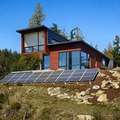




















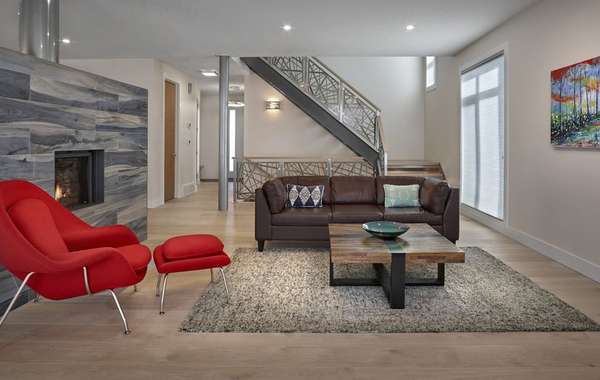
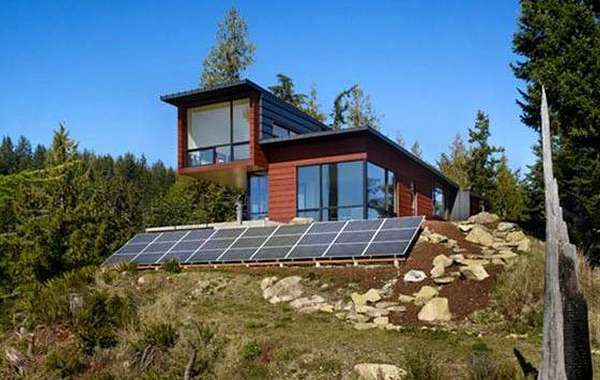



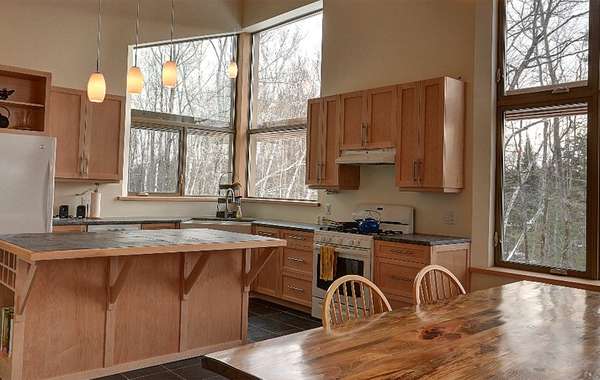

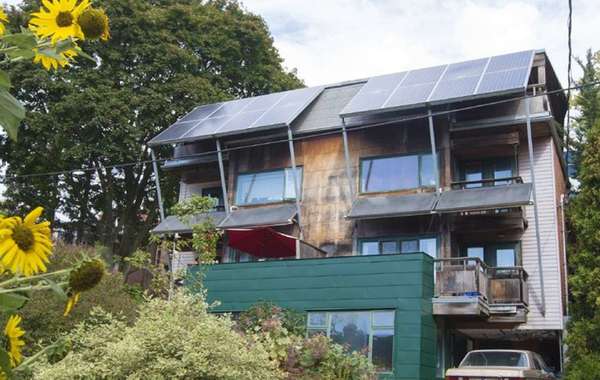

Hi,
How much was the Novus 300 unit, and where to buy it?
Thanx
Beautiful home, congratulations. I am building a similar project in Halifax (designed to Passive House) and like you decided on PV panels with grid tied net-metering to power a heat pump hot water heater. I am on the fence with in-floor heat as a supplementary heating source since I have a propane fireplace & 2 mini-splits as backup. Not sure if code will require me to install a few baseboard heaters as well. I'd appreciate your thoughts on secondary heat sources. Regards - Craig
Craig,
Is this project in Halifax Nova Scotia? I'm very interested in this as I am from this location as well and very interested in doing a similar project.
Jeremy, yes drop me a PM and we can exchange information. I'm at [email protected]
Great information! I am wondering what would be the mechanical room square footage of this house?
Hi Sam,
The mechanical room is about 100 square feet. There is alot of stuff going on in there so it needs a bit more space than normal, but nothing too extreme. In case you are in the process of designing, remember it may be better to have a little extra space that you can use for storage rather than being jammed in.
When you're building a slab-on-grade, the mechinical room can be a great place to incorporate storage or a pantry for example, so you have access to additional space just in case you end up needing it in the future. That way you won't end up having to stick a water softener in your bedroom or something :)